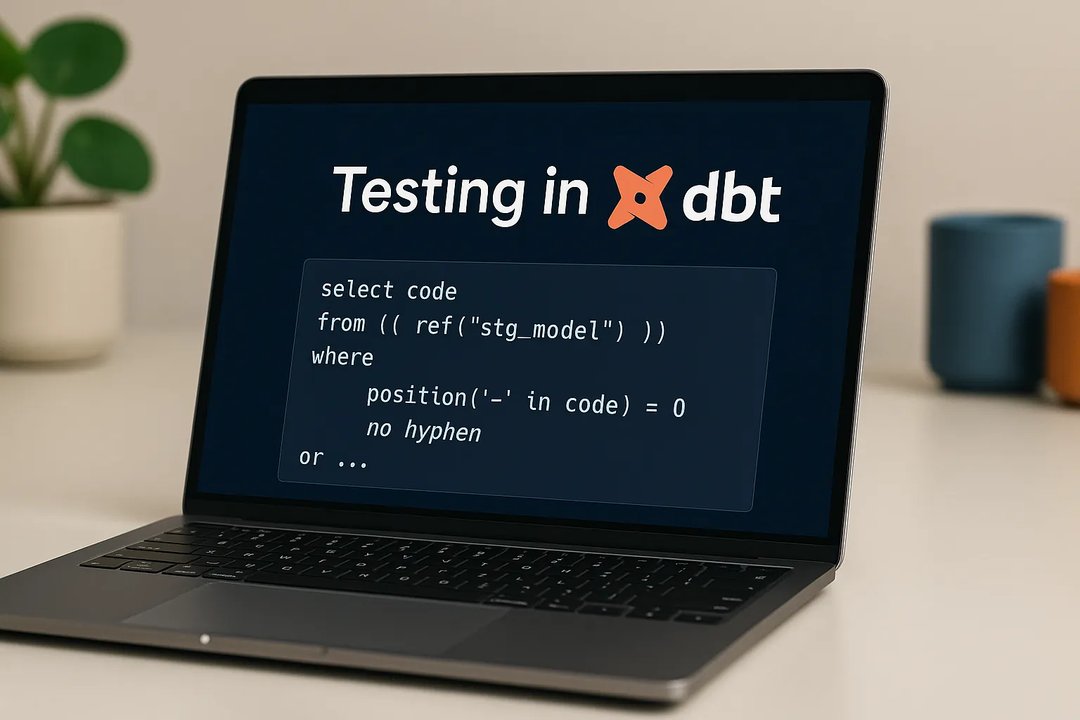
Sunscrapers Team
27 July 2023, 18 min read

What's inside
- Understanding Neural Network Architectures for NLP
- Overview of CNNs, RNNs, and transformers in NLP
- Recurrent Neural Networks (RNNs) for NLP
- Named Entity Recognition (NER) with Deep Learning
- Conclusion
Deep learning is a subset of machine learning that uses algorithms inspired by the structure and function of the human brain, known as artificial neural networks, to learn from large sets of data. Deep learning models can automatically identify patterns and features in data without being explicitly programmed to do so.
Deep learning has revolutionized the field of natural language processing (NLP) by allowing for the creation of highly accurate and flexible models for tasks such as language translation, sentiment analysis, and language understanding. Traditional NLP approaches relied on rule-based methods highly dependent on human expertise to identify and classify language patterns.
On the other hand, deep learning models can learn directly from large amounts of text data, allowing them to capture complex relationships between words and phrases in a language and to generalize to new and unseen examples. This has led to significant improvements in the accuracy of NLP models and has opened up new possibilities for applications such as chatbots, virtual assistants, and automated text summarization.
Understanding Neural Network Architectures for NLP
Some examples of deep learning models used in NLP include recurrent neural networks (RNNs), which can process sequential data such as text, and transformer models, which use self-attention mechanisms to capture global relationships between words in a sentence. These models have been used to create powerful language models such as GPT-3, which can generate human-like text and perform a wide range of language tasks with high accuracy.
Several neural network architectures are used in natural language processing, each with its own strengths and weaknesses.
Here is an overview of some of the most commonly used architectures:
- Convolutional Neural Networks (CNNs)
CNNs were initially developed for image processing but have been adapted for NLP tasks such as text classification and sentiment analysis. The architecture consists of convolutional layers that apply filters to local regions of an input sequence to extract features, followed by pooling layers that downsample the output of the convolutional layers. The output of the pooling layers is then fed into one or more fully connected layers for classification.
- Recurrent Neural Networks (RNNs)
RNNs are designed to process sequential data, such as text, by processing one input at a time and maintaining a hidden state that captures information about the previous inputs. The most commonly used RNN is the Long Short-Term Memory (LSTM) network, which uses gates to control the flow of information in and out of the hidden state. LSTMs are particularly effective at capturing long-term dependencies in a sequence and have been used for language modeling and machine translation tasks.
- Transformers
Transformers are a relatively recent architecture with remarkable performance on a wide range of NLP tasks. They use a self-attention mechanism to capture global relationships between words in a sentence, allowing them to process input sequences in parallel rather than sequentially. The most well-known transformer model is the transformer-based language model, such as BERT and GPT-3, which have achieved state-of-the-art performance on tasks such as text classification, named entity recognition, and language generation.
- Recursive Neural Networks (Recursive NNs)
Recursive neural networks are used when the input data is tree-like or hierarchical in structure, such as parse trees or constituency trees. They recursively apply the same neural network module to each node in the tree, combining the outputs of child nodes to generate a representation for the parent node. Recursive neural networks have been used for sentiment analysis and relation extraction tasks.
- Hybrid models
In addition to the architectures, as mentioned earlier, some hybrid models combine multiple neural network architectures. For example, the Hierarchical Attention Network (HAN) combines a CNN with an RNN and attention mechanism to capture local and global relationships in a text sequence. Combining different architectures allows for more effective modeling of the complex relationships between words and phrases in natural language.
Overview of CNNs, RNNs, and transformers in NLP
I want to focus your attention on Convolutional Neural Networks (CNNs), Recurrent Neural Networks (RNNs), and transformers for Natural Language Processing.
Specifically, we will dive into how RNNs can be used for sequence-to-sequence tasks such as machine translation and text summarization. Additionally, I will provide an example of how to implement a simple RNN for text classification using Python and TensorFlow/Keras. We will also briefly touch on the use of Transformers for NLP.
So, if you want to learn more about these topics and their practical applications in NLP, read on!
Convolutional Neural Networks (CNNs) for NLP
Convolutional Neural Networks (CNNs) were originally developed for image processing. Still, they have also been successfully applied to natural language processing tasks such as text classification, sentiment analysis, and language modeling.
In NLP, CNNs are typically used to process variable-length sequences of word embeddings, where each word is represented as a dense vector in a high-dimensional space. The input sequence is first passed through one or more convolutional layers, which apply fixed-width filters to the input sequence to extract local features. The output of the convolutional layers is then passed through one or more pooling layers, which downsample the feature maps to reduce their dimensionality.
Several variations of CNN architectures are used in NLP, depending on the specific task and the nature of the input data. One common approach is to use multiple filters of different sizes to capture different n-gram features, such as unigrams, bigrams, and trigrams. The output of each filter is then concatenated into a single feature vector and passed through one or more fully connected layers for classification or regression.
Another approach is a hierarchical CNN architecture, where the input sequence is first split into smaller subsequences, such as sentences or paragraphs. Each subsequence is processed independently by a lower-level CNN. The output of the lower-level CNNs is then concatenated and processed by a higher-level CNN to capture global features and dependencies between the subsequences.
CNNs have several advantages for NLP tasks. They are computationally efficient and can process input sequences in parallel, which makes them suitable for large-scale datasets. They can also capture local features and patterns in the input sequence, which can be helpful for tasks such as sentiment analysis and text classification. However, CNNs are less effective at modeling long-term dependencies and sequential relationships in a text sequence than recurrent neural networks (RNNs) and transformer models, which are better suited for language modeling and machine translation tasks.
Using CNNs for Text Classification
This response will focus on how CNNs can be used for text classification tasks such as sentiment analysis and spam detection.
- Sentiment Analysis
Sentiment analysis determines the sentiment expressed in a given text, typically classified as positive, negative, or neutral.
CNNs can be used for sentiment analysis by treating it as a binary or multi-class classification problem. Here is a possible CNN architecture for sentiment analysis:
- Embedding layer: Convert the input text into a sequence of dense word embeddings, where a high-dimensional vector represents each word.
- Convolutional layer: Apply a convolution operation to the input sequence, which convolves a filter over a sliding window of words and generates a feature map.
- **Max-pooling layer: Downsample the feature map by taking the maximum value of each feature map, which captures essential features of the input sequence.
- Fully connected layer: Flatten the pooled feature map into a one-dimensional vector and pass it through one or more fully connected layers for classification.
The above architecture can be extended by using multiple convolutional and pooling layers or by incorporating additional techniques such as dropout regularization and batch normalization to improve generalization and reduce overfitting.
- Spam Detection
Spam detection is the task of identifying unwanted or unsolicited messages, typically classified as spam or non-spam. CNNs can be used for spam detection by treating it as a binary classification problem. Here is a possible CNN architecture for spam detection:
- Embedding layer: Convert the input text into a sequence of dense word embeddings, where a high-dimensional vector represents each word.
- Convolutional layer: Apply a convolution operation to the input sequence, which convolves a filter over a sliding window of words and generates a feature map.
- Max-pooling layer: Downsample the feature map by taking the maximum value of each feature map, which captures the most important features of the input sequence.
- Fully connected layer: Flatten the pooled feature map into a one-dimensional vector and pass it through one or more fully connected layers for binary classification.
The above architecture can be extended by using multiple convolutional and pooling layers or by incorporating additional techniques such as attention mechanism and character-level embeddings to improve the model's performance.
In both sentiment analysis and spam detection tasks, the CNN architecture can be further improved by using pre-trained word embeddings such as Word2Vec, GloVe, or fastText, which have been trained on large-scale corpora and capture rich semantic and syntactic information of words. These pre-trained word embeddings can be fine-tuned during the training of the CNN or used as fixed embeddings during the inference phase.
CNNs for Sentiment Analysis
Here's an example of implementing a CNN for sentiment analysis using Python and TensorFlow/Keras.
- First, let's import the required libraries:
import tensorflow as tf
from tensorflow.keras.preprocessing.sequence import pad_sequences
from tensorflow.keras.layers import Input, Embedding, Conv1D, MaxPooling1D, Flatten, Dense
from tensorflow.keras.models import Model
from tensorflow.keras.datasets import imdb
- Next, we will load the IMDB movie review dataset and preprocess it:
max_features = 10000 # maximum number of words to keep based on word frequency
maxlen = 200 # maximum length of each review
(x_train, y_train), (x_test, y_test) = imdb.load_data(num_words=max_features)
# Pad the sequences to ensure that all reviews have the same length
x_train = pad_sequences(x_train, maxlen=maxlen)
x_test = pad_sequences(x_test, maxlen=maxlen)
- Next, we will define the CNN architecture:
inputs = Input(shape=(maxlen,))
embedding = Embedding(max_features, 128, input_length=maxlen)(inputs)
# Apply multiple 1D convolutional layers with different kernel sizes
conv1 = Conv1D(filters=64, kernel_size=3, activation='relu')(embedding)
pool1 = MaxPooling1D(pool_size=2)(conv1)
conv2 = Conv1D(filters=64, kernel_size=4, activation='relu')(embedding)
pool2 = MaxPooling1D(pool_size=2)(conv2)
conv3 = Conv1D(filters=64, kernel_size=5, activation='relu')(embedding)
pool3 = MaxPooling1D(pool_size=2)(conv3)
# Concatenate the output of the pooling layers
merged = tf.concat([pool1, pool2, pool3], axis=-1)
flatten = Flatten()(merged)
dense = Dense(64, activation='relu')(flatten)
outputs = Dense(1, activation='sigmoid')(dense)
model = Model(inputs=inputs, outputs=outputs)
model.summary()
- Finally, we will compile and train the model:
model.compile(optimizer='adam', loss='binary_crossentropy', metrics=['accuracy'])
model.fit(x_train, y_train, validation_data=(x_test, y_test), epochs=5, batch_size=128)
In this example, we define a CNN with multiple 1D convolutional layers and different kernel sizes, which allows the model to capture local features of different sizes.
We then concatenate the output of the pooling layers and pass it through a fully connected layer for classification.
The model is compiled with the binary cross-entropy loss function and the Adam optimizer, and is trained for five epochs with a batch size of 128. You can adjust the hyperparameters to perform better or experiment with different architectures and techniques, such as dropout regularization and batch normalization.
Recurrent Neural Networks (RNNs) for NLP
Recurrent Neural Networks (RNNs) are another type of neural network architecture commonly used in Natural Language Processing. Unlike CNNs, RNNs are designed to handle sequential data such as sentences, paragraphs, and documents.
The main idea behind RNNs is to maintain a hidden state that summarizes the information seen so far and update it at each step based on the input and the previous hidden state. This allows the network to capture the context and dependencies between words in a sentence, which is critical for many NLP tasks such as language modeling, machine translation, and sentiment analysis.
There are several types of RNNs, including the basic RNN, the Long Short-Term Memory (LSTM), and the Gated Recurrent Unit (GRU). These variants differ in how they update the hidden state and control the flow of information through the network.
One common challenge with RNNs is the vanishing gradient problem, where the gradients become very small as they propagate through the network, making it challenging to train deep RNNs. Several techniques have been proposed to address this issue, such as gradient clipping, weight initialization, and layer normalization.
In NLP, RNNs are often used for language modeling, sentiment analysis, and machine translation tasks. They can also be combined with other techniques, such as attention mechanisms and transformer architectures, to improve performance further.
One notable application of RNNs in NLP is using LSTMs for language modeling, which has been shown to achieve state-of-the-art results on several benchmark datasets. Another popular application is the use of GRUs or LSTMs for sentiment analysis, where the network is trained to predict the sentiment of a given text based on its context and other features.
RNNs for Sequence-to-Sequence Tasks
RNNs can be used for sequence-to-sequence tasks such as machine translation and text summarization using a particular type of RNN called the encoder-decoder architecture.
The encoder-decoder architecture consists of two RNNs: an encoder that processes the input sequence and produces a fixed-length context vector and a decoder that generates the output sequence based on the context vector and the previous output.
In machine translation, for example, the encoder takes in a sentence in the source language and produces a context vector that summarizes its meaning. The decoder then uses this context vector and generates a sentence in the target language one word at a time.
Similarly, in text summarization, the encoder takes in a lengthy document and produces a context vector that captures its main ideas. The decoder then generates a summary based on the context vector and the previous output.
The key advantage of the encoder-decoder architecture is that it can handle variable-length input and output sequences, a common scenario in NLP. It also allows the model to learn the end-to-end relationships between the input and output sequences without relying on hand-crafted features or heuristics.
To train an encoder-decoder model, we typically use a dataset of aligned input-output pairs and optimize a loss function that measures the discrepancy between the predicted output and the ground-truth output. We can use techniques such as teacher forcing, beam search, and attention mechanisms to improve the quality of the generated work.
RNN for Text Classification
Let me show you an example of how to implement a simple RNN for text classification using Python and TensorFlow/Keras:
import tensorflow as tf
from tensorflow.keras.layers import Input, Embedding, SimpleRNN, Dense
from tensorflow.keras.models import Model
# define the input shape
input_shape = (None, )
# define the vocabulary size and embedding dimension
vocab_size = 10000
embedding_dim = 100
# define the RNN size and output size
rnn_size = 64
output_size = 1
# define the input layer
inputs = Input(shape=input_shape)
# define the embedding layer
embed = Embedding(vocab_size, embedding_dim)(inputs)
# define the RNN layer
rnn = SimpleRNN(rnn_size)(embed)
# define the output layer
outputs = Dense(output_size, activation='sigmoid')(rnn)
# define the model
model = Model(inputs=inputs, outputs=outputs)
# compile the model
model.compile(optimizer='adam',
loss='binary_crossentropy',
metrics=['accuracy'])
# print the model summary
model.summary()
This example defines a simple RNN model for binary text classification. The input is a sequence of arbitrary length, represented by integers corresponding to the indices of the words in the vocabulary. We use an embedding layer to map the input sequence to a sequence of dense vectors of fixed size. We feed the embedded sequence into a SimpleRNN layer, which processes the sequence and produces a fixed-length output. Finally, we use a dense layer with a sigmoid activation function to create a binary outcome.
Once the model is defined, we compile it by specifying the optimizer, loss function, and evaluation metrics. We can then train the model on a dataset of labeled text samples using the fit() method.
Note that this is a simple example, and there are many ways to improve the model's performance, such as using more complex architectures, pre-trained embeddings, and regularization techniques.
Transformers: Game-Changer for NLP Tasks
The transformer architecture is a neural network architecture that has revolutionized natural language processing (NLP) in recent years. It was first introduced in the paper "Attention Is All You Need" by Vaswani et al. in 2017.
The transformer architecture uses attention mechanisms to allow the model to focus on different parts of the input sequence when processing each token. This is in contrast to earlier models, such as RNNs, which process the input sequentially and are, therefore, more limited in their ability to model long-range dependencies.
The transformer architecture consists of layers, each applying a multi-headed self-attention mechanism followed by a feedforward neural network. The self-attention mechanism allows the model to attend to all positions in the input sequence, enabling it to capture long-range dependencies more effectively than RNNs.
One of the key benefits of transformer architecture is that it can be trained on large amounts of data in a parallelizable way, making it highly scalable. This has led to its success in various NLP tasks, including language modeling, machine translation, text classification, and question-answering.
Language modeling is one of the most common NLP tasks, where the goal is to predict the next word in a sequence given the previous words. The transformer architecture has been used to develop state-of-the-art language models, such as GPT (Generative Pre-trained Transformer), which has achieved impressive results on benchmarks such as the GLUE and SuperGLUE datasets.
Question answering is another important NLP task, where the goal is to answer questions posed in natural language. The transformer architecture has been used to develop models such as BERT (Bidirectional Encoder Representations from Transformers), which has achieved state-of-the-art results on question-answering benchmarks such as the Stanford Question Answering Dataset (SQuAD).
Exploring Popular Transformer Models
Two of the most widely used models are BERT (Bidirectional Encoder Representations from Transformers) and GPT-3 (Generative Pre-trained Transformer 3).
- BERT is a transformer-based model developed by Google that has achieved state-of-the-art results on a wide range of NLP tasks, including question-answering, text classification, and natural language inference. It consists of a bidirectional transformer encoder, which means that the model is trained to predict a given word's left and right context. BERT is pre-trained on large amounts of text data using two tasks: masked language modeling and next-sentence prediction.
- GPT-3 is a transformer-based language model developed by OpenAI that has achieved impressive results on a wide range of NLP tasks, including language modeling, text generation, and question answering. It is the largest language model, with 175 billion parameters, and was trained on a diverse range of text data. GPT-3 is a generative model that generates new text based on a given prompt.
Fine-tuning these models involves taking the pre-trained weights and training them further on specific NLP tasks. Here are some code examples for fine-tuning BERT and GPT-3:
- Fine-tuning BERT on sentiment analysis:
!pip install transformers
from transformers import BertTokenizer, BertForSequenceClassification
from torch.utils.data import DataLoader, RandomSampler, SequentialSampler
from transformers import AdamW
from tqdm import tqdm
# Load tokenizer and pre-trained model
tokenizer = BertTokenizer.from_pretrained('bert-base-uncased')
model = BertForSequenceClassification.from_pretrained('bert-base-uncased', num_labels=2)
# Load and preprocess data
train_data = [...] # list of (text, label) pairs
train_texts, train_labels = zip(*train_data)
train_encodings = tokenizer(train_texts, truncation=True, padding=True)
train_labels = torch.tensor(train_labels)
# Prepare data for training
train_dataset = torch.utils.data.TensorDataset(train_encodings['input_ids'],
train_encodings['attention_mask'],
train_labels)
train_sampler = RandomSampler(train_dataset)
train_dataloader = DataLoader(train_dataset, sampler=train_sampler, batch_size=16)
# Set up optimizer and training parameters
optimizer = AdamW(model.parameters(), lr=1e-5)
num_epochs = 5
# Fine-tune the model
model.train()
for epoch in range(num_epochs):
for batch in tqdm(train_dataloader):
input_ids = batch[0].to(device)
attention_mask = batch[1].to(device)
labels = batch[2].to(device)
optimizer.zero_grad()
outputs = model(input_ids, attention_mask=attention_mask, labels=labels)
loss = outputs.loss
loss.backward()
optimizer.step()
# Evaluate the model on test data
test_data = [...] # list of (text, label) pairs
test_texts, test_labels = zip(*test_data)
test_encodings = tokenizer(test_texts, truncation=True, padding=True)
test_labels = torch.tensor(test_labels)
test_dataset = torch.utils.data.TensorDataset(test_encodings['input_ids'],
test_encodings['attention_mask'],
test_labels)
test_sampler = SequentialSampler(test_dataset)
test_dataloader = DataLoader(test_dataset, sampler=test_sampler, batch_size=16)
model.eval()
with torch.no_grad():
total_correct = 0
total_samples = 0
for batch in test_dataloader:
input_ids = batch[0].to(device)
attention_mask = batch[1].to(device)
Named Entity Recognition (NER) with Deep Learning
Named Entity Recognition (NER) is an important task in NLP that involves identifying and classifying named entities in text into predefined categories such as person names, organizations, locations, dates, etc. NER has several real-world applications: information extraction, question answering, and text classification. Deep Learning effectively solves NER problems, and several state-of-the-art models have been developed using deep learning techniques.
One of the most widely used deep learning models for NER is the BiLSTM-CRF model. This model consists of a bidirectional Long Short-Term Memory (BiLSTM) layer followed by a Conditional Random Field (CRF) layer. The BiLSTM layer is used to capture the context of the input sequence, while the CRF layer is used to model the dependencies between the output labels.
Here's an example of how to implement a BiLSTM-CRF model for NER using PyTorch:
import torch
import torch.nn as nn
import torch.optim as optim
class BiLSTM_CRF(nn.Module):
def __init__(self, vocab_size, tag_to_ix, embedding_dim, hidden_dim):
super(BiLSTM_CRF, self).__init__()
self.embedding_dim = embedding_dim
self.hidden_dim = hidden_dim
self.vocab_size = vocab_size
self.tag_to_ix = tag_to_ix
self.tagset_size = len(tag_to_ix)
self.word_embeddings = nn.Embedding(vocab_size, embedding_dim)
self.lstm = nn.LSTM(embedding_dim, hidden_dim // 2,
num_layers=1, bidirectional=True)
self.hidden2tag = nn.Linear(hidden_dim, self.tagset_size)
self.transitions = nn.Parameter(torch.randn(self.tagset_size, self.tagset_size))
self.transitions.data[tag_to_ix['<START>'], :] = -10000
self.transitions.data[:, tag_to_ix['<STOP>']] = -10000
def forward(self, sentence):
embeds = self.word_embeddings(sentence)
lstm_out, _ = self.lstm(embeds.view(len(sentence), 1, -1))
lstm_out = lstm_out.view(len(sentence), self.hidden_dim)
tag_scores = self.hidden2tag(lstm_out)
return tag_scores
def loss(self, sentence, tags):
score = self.forward(sentence)
init_alphas = torch.full((1, self.tagset_size), -10000.)
init_alphas[0][self.tag_to_ix['<START>']] = 0.
forward_var = init_alphas
for feat in score:
alphas_t = []
for next_tag in range(self.tagset_size):
emit_score = feat[next_tag].view(1, -1).expand(1, self.tagset_size)
trans_score = self.transitions[next_tag].view(1, -1)
next_tag_var = forward_var + trans_score + emit_score
alphas_t.append(torch.logsumexp(next_tag_var, dim=1).view(1))
forward_var = torch.cat(alphas_t).view(1, -1)
terminal_var = forward_var + self.transitions[self.tag_to_ix['<STOP>']]
terminal_var = terminal_var.view(-1)
gold_score = self.score(sentence, tags)
return (terminal_var - gold_score)
def score(self, sentence, tags):
score = torch.zeros(1)
tags = torch.cat([torch.tensor([self.tag_to_ix['<START>']], dtype=torch.long), tags])
for i, feat in enumerate(self.forward(sentence)):
score =
Conclusion
CNNs are typically used for tasks like text classification and sentiment analysis. They apply filters to windows of text to capture local features, which are combined and passed through fully connected layers for classification.
RNNs, on the other hand, are ideal for sequence modeling tasks like language modeling and machine translation. They operate by processing the text one word at a time while maintaining an internal state that captures the context of previous words.
Finally, transformers are a more recent development in NLP and are particularly effective for tasks like language modeling and question-answering. They use self-attention mechanisms to capture long-range dependencies in text, enabling them to process entire text sequences at once.


